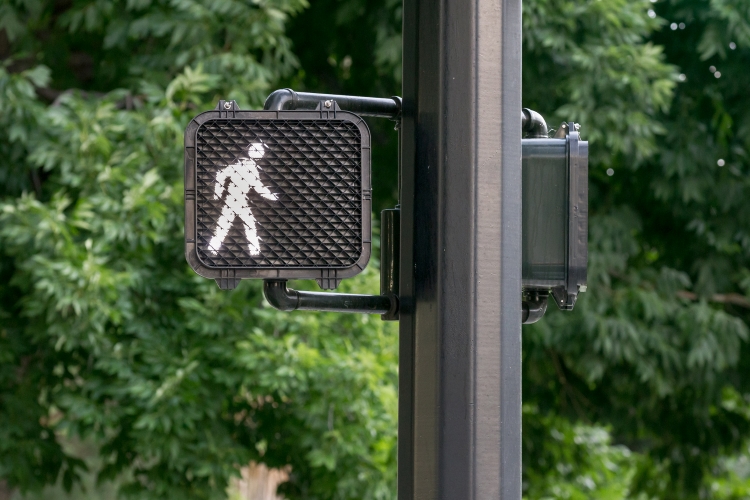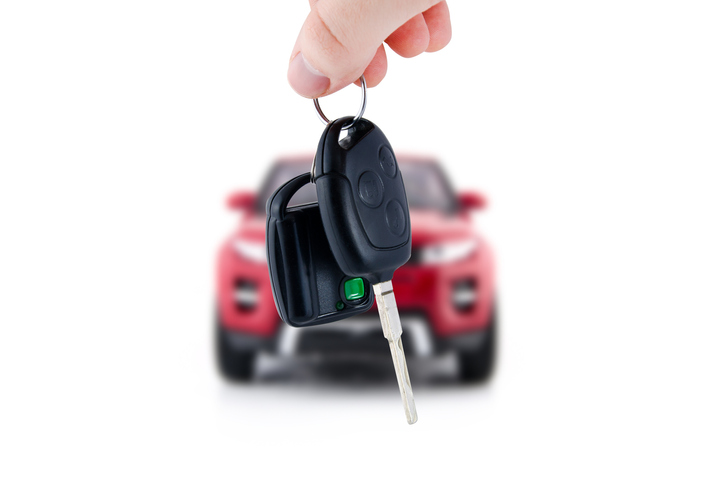Every morning, millions of Americans start their day by driving or walking to work, to school or to run errands. As drivers and passengers in a car, you and your family are well-protected whenever you take to the road. This is, in large part, thanks to advances in technology, such as seat belts, airbags, blind spot detectors and rearview cameras. But, as pedestrians, you and your family are in increasingly more danger whenever you’re on foot, especially if you’re near roadways or parking lots.
According to the most recent pedestrian traffic fatality data analyzed by the National Safety Council, pedestrian fatalities as a percent of all traffic fatalities has been on the rise since 2005, “now accounting for 17.7%.” That’s 7,522 pedestrians who were killed, not to mention the over 67,000 pedestrians who were injured nationwide, per the National Highway Traffic Safety Administration.
To help protect your family, it’s important to understand the causes for pedestrian fatalities, like how to prevent distracted driving as well as the safest steps to take as a pedestrian, especially when school is in session.
Why Are Pedestrian Deaths on the Rise?
Increased Speed Limits
According to Allan Williams, chief scientist at the Insurance Institute for Highway Safety (IIHS), when the National Maximum Speed Law was passed in 1974, limiting the speed limit to 55 mph on all interstate roads, fatality rates dropped significantly. However, after the law was repealed in the 90s, roadway fatalities increased.
And although speed limits have increased over time, some drivers still deem it necessary to exceed that limit. According to AAA research, 48% of U.S. drivers are likely to drive 15 mph or more over the speed limit. That is an estimated 106 million total drivers that are speeding.
Given these findings, it isn’t difficult to understand why pedestrian casualties have risen. When people drive fast, even when they’re driving within the speed limit, streets and crosswalks can become more dangerous for pedestrians, (but this is especially true when people do not abide by the law).
Distracted Drivers
Distracted driving from a device is also a major contributor to increased crash frequency. Although distraction has always been an issue for concern, in recent years, the ways in which drivers can be distracted have greatly evolved.
Texting while driving, in particular, has become a fairly widespread and incredibly dangerous behavior for drivers of all ages. Almost 40% of teens “have admitted to texting while driving,” even with most new vehicles being equipped with hands-free technology.
According to the National Highway Traffic Safety Administration: “Texting is the most alarming distraction. Sending or reading a text takes your eyes off the road for 5 seconds. At 55 mph, that’s like driving the length of an entire football field with your eyes closed.”
Drowsy Drivers
Drowsy driving is also a major threat to roadway safety. Although many drivers recognize the dangers of drowsy driving, (48% said it is a very serious threat; 83% said it is completely unacceptable), some (31%) have still driven while drowsy.
According to Dr. Nathaniel Watson, president-elect of the American Academy of Sleep Medicine, driving while sleep-deprived is similar to driving while intoxicated. Both compromise “driving ability by reducing alertness and attentiveness, delaying reaction times, and hindering decision-making skills.” And both place pedestrians and drivers in danger. While sleep deprivation decreases a driver’s awareness, it can also cause the driver to present road rage.
Distracted Walkers
According to the latest data, a pedestrian was killed every 70 minutes in traffic crashes, per the National Highway Traffic Safety Administration. But it’s not just drivers who are distracted. Even pedestrians may fail to pay attention when outdoors, wandering into dangerous areas such as busy streets or active parking lots. That’s why the National Highway Traffic Safety Administration put together a resource to help keep those on foot safe: 8 Walking Safety Tips.
There are also other pedestrian-related factors that have contributed to the rise in casualties. One of the most significant is an overall rise in the number of people walking. Many people are making the effort to walk more, for both environmental and health reasons. As evidence of this, pedometers, such as the Fitbit, are as popular as ever, with Fitbit’s latest data showing 31 million active users. Ultimately, with more people walking outdoors, there is an increased likelihood for pedestrian accidents.
Engineering Solutions for Pedestrian Safety
Even though individuals are expected to behave safely of their own accord, the planning of roadways, sidewalks and traffic lights has long been an important factor in keeping both drivers and pedestrians safe and preventing traffic or congestion. In recent years, there have been major developments to help advance this effort, such as dedicated lanes for buses and cyclists and audible traffic cues for people with poor eyesight.
And some countries are employing sophisticated and innovative solutions to help protect pedestrians. One city in Germany, for example, has installed inground traffic lights so that pedestrians who are looking down at their phones will still be able to see the traffic signals.
Six Tips to Help Keep Pedestrians Safe
As advances in technology lead to breakthrough safety solutions, they also introduce new distractions for both drivers and pedestrians. Fortunately, there are easy steps we can take behind the wheel to help keep pedestrians safe, including:
- Observe pedestrian traffic signals
- Always check your mirrors
- Avoid distractions while driving
- Keep windows (and your glasses!) clean
- Assume pedestrians are distracted
- Observe traffic signals
Most importantly: we can be role models for safe behavior to others, including our loved ones. By accepting this responsibility, we can help prevent ourselves and others from becoming another crash statistic.







Yes thanks, always good to be reminded of safe driving/Walking tips